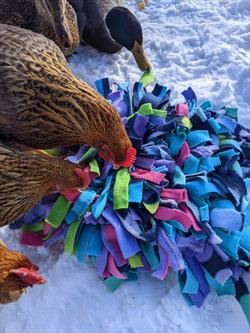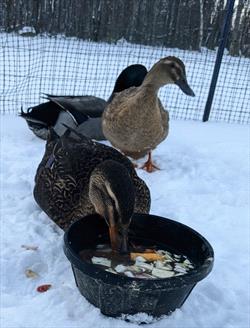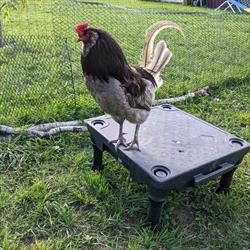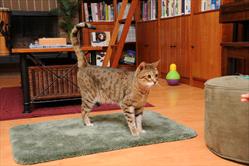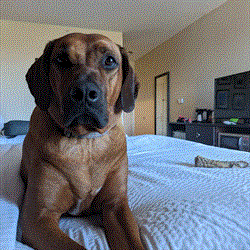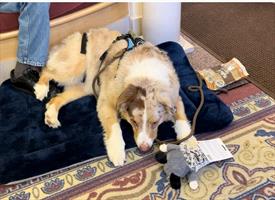Dodger DeGioia

Photo Courtesy Phyllis DeGioia, Veterinary Partner Editor
Deciding to euthanize your pet who is sick, debilitated, or injured is difficult and heartbreaking. Sometimes the decision is a logical one if your pet is severely injured or has been diagnosed with an untreatable disease and is clearly suffering. In these cases, the quality of life is poor and will not improve with time, medical care, or love.
When the issue in question is behavioral, such as after injuring a family member, another pet, or a stranger, the decision for euthanasia may not be clear. Your pet may panic because of noises, people, other animals, or being left home alone. Perhaps they engage in abnormal repetitive behaviors and cannot stop. It can be hard to determine if your pet is suffering because the behavior has not improved.
In human medicine, these types of disorders are referred to as psychological or mental health disorders. There has been a history of discounting psychological disorders, but medical professionals now know that these are diseases, like cancer or diabetes. Sometimes the pet has a true emotional disorder that is not man-made through mistreatment or lack of training. These concerns cannot be solved “with love”, through “putting the animal in its place”, or by taking obedience lessons.
Psychological or behavioral diseases are diseases of the brain, just as cancer is a disease of the cell. Some cancers respond to treatment, some will not. Some will appear to respond initially, then relapse. Cancer which resolves quickly in one individual may be terminal in another. Some cancers generally considered treatable are fatal for others. Some patients may not be able to tolerate the treatment that is designed to save their life. Although veterinary behavioral medicine has progressed so many behavior disorders can be managed and treated, there will be variable responses among animals.
If you are considering euthanasia for behavioral reasons, there may be alternative options to consider first.
Have You Taken Your Pet to the Veterinarian?
Many behavioral problems have underlying medical conditions that contribute to behavior. Conditions such as ear infections, dental disease, arthritis, and even skin allergies can cause pain and irritability, increasing your pet’s anxiety levels, or resulting in a bite when stressed. Scheduling a check-up with your veterinarian should be first on your list with any noted behavioral change, especially if this change is recent or your pet is older.
Have You Sought Out Professional Help?
A board-certified veterinary behaviorist is a licensed veterinarian with advanced training in animal behavior for all types of behaviors. Applied Animal Behaviorists also have advanced academic training although these professionals do not need to be licensed veterinarians. Medications may be helpful in treating your pet’s aggression or anxiety problems, but only a licensed veterinarian can prescribe medications for your pet.
A qualified dog trainer can help you implement a management, training, and behavior modification plan often prescribed by your veterinarian or veterinary behaviorist. Unfortunately, experience levels, education, and training methods are not standardized among dog training professionals; therefore, it is important for you to do your homework before hiring a trainer. Understanding that some training methods can do more harm than good is important.
Have You Considered Rehoming?
This may not be the solution for all pets, but some behavior problems can be managed well in a different environment. Fighting dogs and cats may do better when separated and away from the common stressors in their life. The same for dogs with a bite history towards kids. Sometimes a home without kids is just what your pet needs to feel safe. Not all pets benefit from, nor should be, rehomed. In general, finding a new and safe home for your pet can be difficult. Animals with behavior problems are often at greater risk for abuse and neglect in new environments because, in these situations, they may not have as close of a relationship with the new owners as they did with you.
AdobeStock_245254873.jpeg

What Are Some Criteria To Consider When Making the Decision To Euthanize Your Pet?
If there are young children or elderly relatives in the home, they are often at a higher risk for injuries related to bites and scratches. Also, behavior modification can be difficult or impossible for some depending on the living situation and commitment made to the pet. Liability is always a concern along with safety for you, your family, and other pets in the home.
Rehoming is not an option. Some animals are not safe in any home. Most shelters will not adopt out animals with a bite history or a history of aggression towards other animals. Cats that eliminate outside the litterbox can also be harder to place. Transparency in shelter adoptions is important from both a legal and ethical standpoint.
Emotional well-being and mental suffering may not be as visible to us as physical pain and disease but can significantly affect your pet’s quality of life and, therefore, yours. When making euthanasia decisions, it is important to consider your pet’s overall emotional state and well-being.
Remember, behavioral euthanasia is a hard decision, so have all the information before making that phone call. There is never a wrong answer but if you make this decision, it is important to know you are not alone and will always be supported.
Working with your veterinarian to explore medical options, you may decide that euthanasia is the best choice for your pet, your family, or the public. Regardless of the psychological cause, euthanasia may be a valid treatment plan and may be the only option. Behavioral euthanasia is hard for both the family and the veterinary team. Mutual respect and open communication without preconceived opinions or biases are important for everyone involved.

